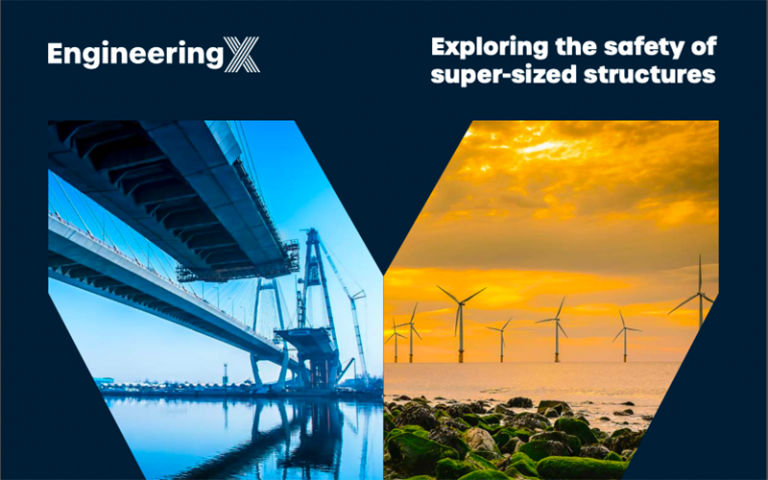UCL helps to explore the safety of super-sized structures
15 July 2021
A report co-led by UCL, and published today as part of the Royal Academy of Engineering’s Engineering X programme, explores the safety challenges of super-sized structures across five sectors and sets out key recommendations to better manage complex systems.

The report, Exploring the safety of super-sized structures, summarises the findings from a workshop co-organised by The Royal Academy of Engineering, UCL and Building Research Establishment (BRE), which looked in detail at whether the size of structures across various domains have common safety engineering features that should be explored.
The workshop, held in May 2020, brought together 30 experts to report on five theme groupings: industrial complexes and processes; geotechnical structures; engineered moving structures; offshore structures; and high-occupancy buildings. It was convened by Professor Jeremy Watson CBE FREng, Professor of Engineering Systems in UCL STEaPP, who also edited the report, and attended by Professor Joanna Chataway, Head of Department in UCL STEaPP, Professor Jose Torero Cullen, Head of Department in UCL Civil, Environmental and Geomatic Engineering.
The discussions highlighted several generic issues and cross-disciplinary concerns, including safety, risks, economics, competency, regulation, and governance. These issues were found to span across the socio-technical, economic, educational, and engineering domains.
The report includes three key recommendations based on the discussions from the workshop. These are:
- Outcomes-based regulation – placing responsibility with the owner/risk creators is most effective, but we must recognise that with complexity comes the significant challenge in identifying a single point of responsibility and maintaining a clear sightline of accountability.
- Competency – the Engineering Council and the professional engineering institutions need to consider competencies required of registrants for CEng. They need to be fit for contemporary purpose, including the practical considerations around cross-disciplinary working, systems thinking and a sound appreciation of ethics in engineering practice so that professionals deliver work with honesty and commitment.
- Research – understanding low occurrence, high consequence ‘Black Swan’ events that impose risks on engineered structures, particularly high occupancy buildings and geotechnical and bridge constructions. We need to understand how to quantify and articulate this for people deciding budgets so that the correct safety engineering can be built-in.
Professor Jeremy Watson writes in the report: “There is clearly a need to move to an outcomes-based regulatory system, as this gives control to experts, whereas rules-based regulation has the danger of allowing people without engineering insight to provide design authority.
“Society should require a duty of care on the part of commissioners of super-sized structures, to ensure adequate competencies and accountabilities exist across the supply and delivery chains.”
The ‘Exploring the safety of super-sized structures’ report has been published today as part of Engineering X’s Safer Complex Systems programme. Safer Complex Systems aims to enhance the safety of complex infrastructure systems globally and this report will be used to inform the current shape of the mission. Engineering X is an international collaboration, founded by the Royal Academy of Engineering and Lloyd’s Register Foundation, to bring together the world’s leading problem-solvers to address the great challenges of our age.
The full report, Exploring the safety of super-sized structures, can be accessed on the Engineering X website.
 Close
Close

